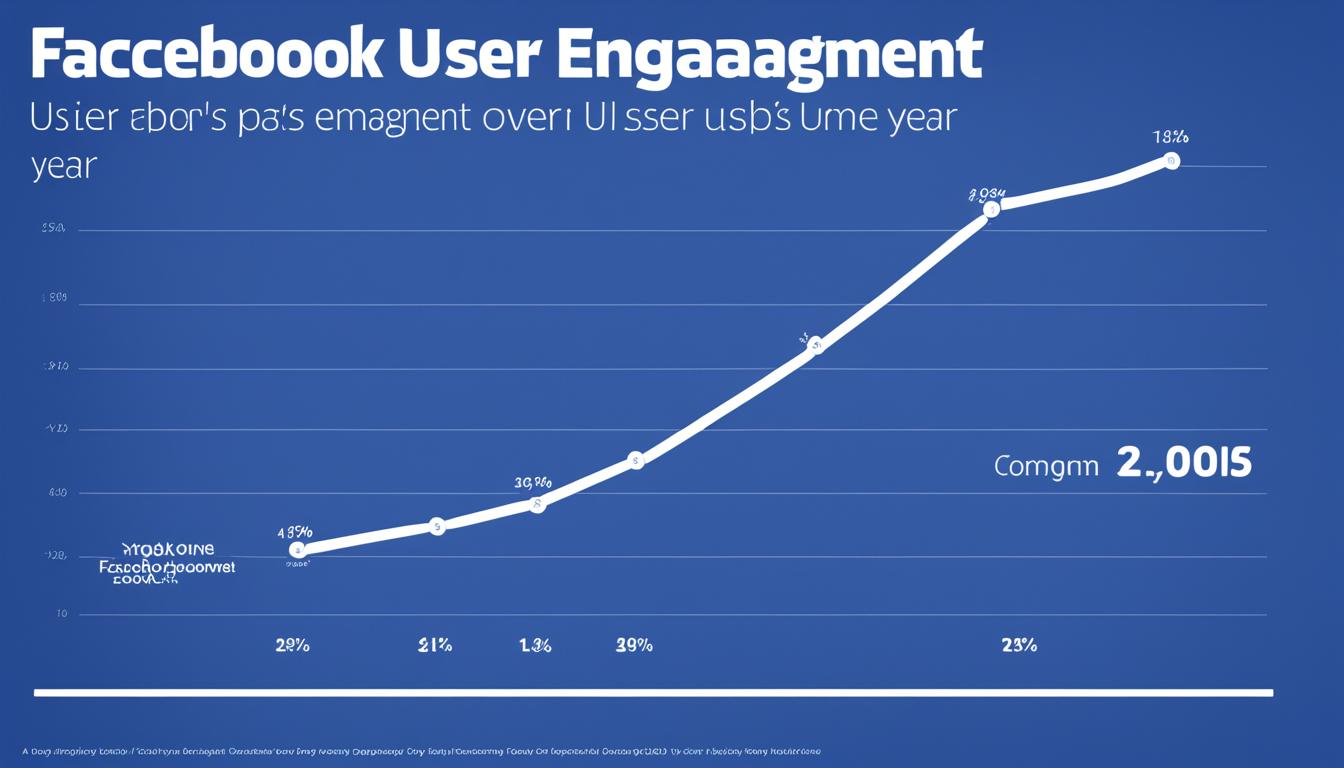There is a distinct energy that beats at the core of rock ‘n’ roll, carrying a rebellious spirit that dares to defy established norms. It embodies a sense of nonconformity, a willingness to stand out and break boundaries. In the realm of marketing, a particular brand has adopted this punk rock attitude, transforming the industry and appealing to a fresh wave of consumers.
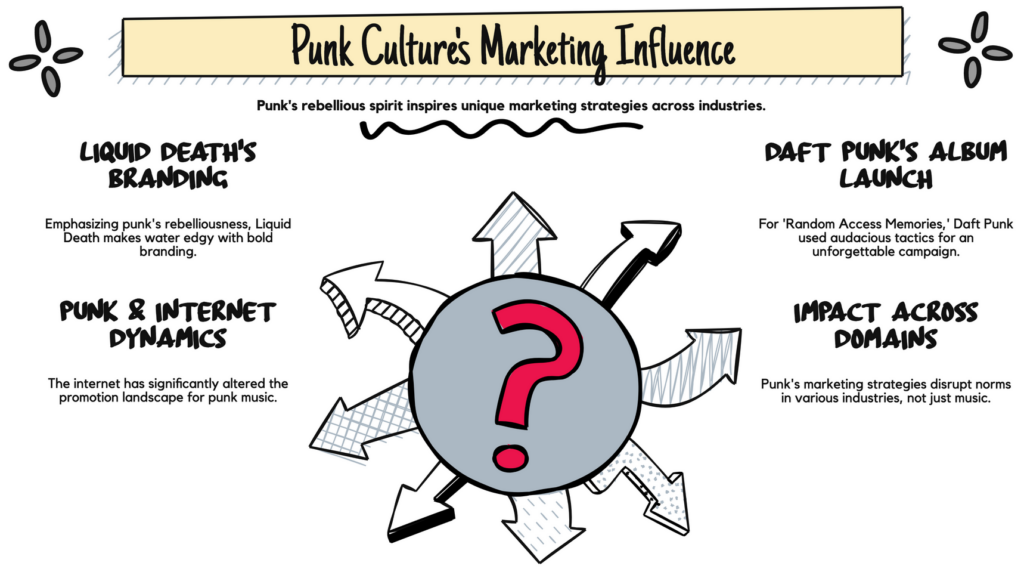
Let me introduce you to Liquid Death, a brand that took the water industry by storm with its punk-inspired design and packaging. Led by its CEO, Mike Cessario, a former creative director with a background in punk rock and heavy metal music, Liquid Death aimed to rebel against the traditional and bring a new energy to the marketing world.
Why water, you might ask? Well, Cessario saw an opportunity to inject some rock ‘n’ roll into an everyday product, a space that didn’t seem very exciting. With a commitment to sustainability, Liquid Death sought to differentiate itself from competitors and capture the attention of millennials and Gen Z.
And oh boy, did they capture attention! Through their unique marketing campaigns and rebellious approach, Liquid Death grew its sales to over $130 million and became a game-changer in the beverage industry. Let’s dive into the details and uncover the rock ‘n’ roll marketing strategies that made Liquid Death a success.
Key Takeaways:
- Liquid Death, a brand with a punk rock attitude, disrupted the water industry with its rebellious marketing strategies.
- CEO Mike Cessario’s background in punk rock and heavy metal music influenced the brand’s unique approach to branding and marketing.
- By embracing creativity and challenging traditional advertising norms, Liquid Death resonated with millennials and Gen Z.
- Punk rock-inspired design elements differentiated Liquid Death from traditional water brands and attracted attention from consumers.
- Liquid Death’s commitment to sustainability, exemplified through its choice of aluminum cans, further reinforced its punk rock image.
Mike Cessario: The Creative Maverick behind Liquid Death
At the helm of Liquid Death, we find a visionary leader who has injected punk rock rebellion into the world of branding and marketing. Meet Mike Cessario, the CEO of Liquid Death, a former creative director with a deep-rooted passion for punk rock and heavy metal music. Drawing inspiration from his background, Cessario has revolutionized the water industry with a distinctive punk rock attitude and a steadfast commitment to sustainability.
Cessario’s unconventional thinking and penchant for challenging norms led him to create Liquid Death, a brand that shattered expectations and disrupted the market. In an industry saturated with mundane and forgettable products, Liquid Death stands out as a rebellious force, injecting excitement into the seemingly ordinary domain of bottled water.
Driven by a desire to be truly different and authentic, Cessario harnessed the power of punk rock culture and translated its essence into the Liquid Death brand. By infusing punk-inspired design elements, such as a skull insignia and tallboy cans, Liquid Death captured attention and ignited curiosity. The brand’s raw and edgy aesthetic has attracted a loyal following, particularly among millennials and Gen Z who resonate with its punk rock ethos.
However, Liquid Death is more than just a punk-inspired facade. It embodies a genuine commitment to sustainability, offering an alternative to single-use plastic bottles. By packaging its water in easily recyclable aluminum cans, the brand sends a strong message about environmental consciousness and reducing plastic waste. This bold move not only aligns with the punk rock culture’s DIY ethos, but also resonates with consumers who prioritize eco-friendly choices.
Through his music-infused background and rebellious attitude, Mike Cessario has proved that even the most seemingly mundane products can become thrilling and enticing when injected with punk rock authenticity. With Liquid Death, Cessario has challenged the status quo, disrupted the water industry, and paved the way for alternative marketing strategies that captivate audiences. Stay tuned as we delve deeper into the punk rock marketing world of Liquid Death and explore the brand’s disruptive campaigns and their significance in the beverage industry.
Liquid Death’s Disruptive Marketing Campaign
Liquid Death’s marketing strategy revolves around embracing the rebellious spirit of punk rock culture and pushing the boundaries of traditional advertising. The brand’s aim is to challenge norms and stand out in a crowded market, capturing the attention of its target audience. By adopting unconventional tactics and injecting creativity into their campaigns, they have successfully resonated with consumers and generated buzz. Let’s explore some of Liquid Death’s rebellious and innovative marketing initiatives.
Album of Death Metal Music from Hate Comments
One of Liquid Death’s most audacious marketing moves was the release of an album of death metal music created from hate comments received online. This bold and unconventional concept allowed the brand to turn negativity into a powerful marketing tool. By harnessing the rebellious energy of punk music, Liquid Death effectively challenged the notion of taking comments too seriously while grabbing the attention of their target audience.
Check out a sample of their creative approach to dealing with hate comments in the form of a death metal track:
“Liquid Death, they suck!”
“Who wants to buy water from a company with such an aggressive image?”
“Liquid Death, the selling point for poseurs!”
“Their branding is too edgy, it won’t last!”
Humorous Taste-Test Videos for Flavored Sparkling Waters
Another innovative marketing tactic employed by Liquid Death was the launch of a line of flavored sparkling waters accompanied by humorous taste-test videos. These videos featured entertaining scenarios where real people tried the unconventional flavors of Liquid Death’s sparkling waters, ranging from “Vitamin Nasty” to “Sparkling Water of Excuses.” The humor injected into the campaign helped the brand engage with consumers and evoke a sense of uniqueness and rebelliousness that aligned with their punk-inspired design and branding.
Watch one of Liquid Death’s taste-test videos showcasing their eccentric flavor offerings:
- “Vitamin Nasty” – A mouthful of attitude
- “Sparkling Water of Excuses” – Embrace the rebellious fizz
- “The Devil’s Bubblegum” – Ignite your taste buds with devilish delight
- “Fruity Mortality” – A sweet yet sinister sip
These unconventional marketing campaigns exemplify Liquid Death’s commitment to standing out and challenging the norm. By embracing rebellious advertising, punk-inspired design, and a bold approach to branding, they have successfully differentiated themselves in the competitive beverage industry.
| Marketing Tactics | Impact |
|---|---|
| Album of death metal music from hate comments | Generated buzz, turned negativity into a marketing tool, and captured attention |
| Humorous taste-test videos for flavored sparkling waters | Engaged with consumers, highlighted uniqueness, aligned with rebellious branding |
Through rebellious advertising and a punk-inspired design, Liquid Death successfully disrupted the traditional beverage marketing landscape. By challenging norms and injecting creativity into their campaigns, they have established a strong brand identity and captured the attention of their target audience. Later sections will explore the power of punk rock branding and Liquid Death’s impact on the beverage industry.
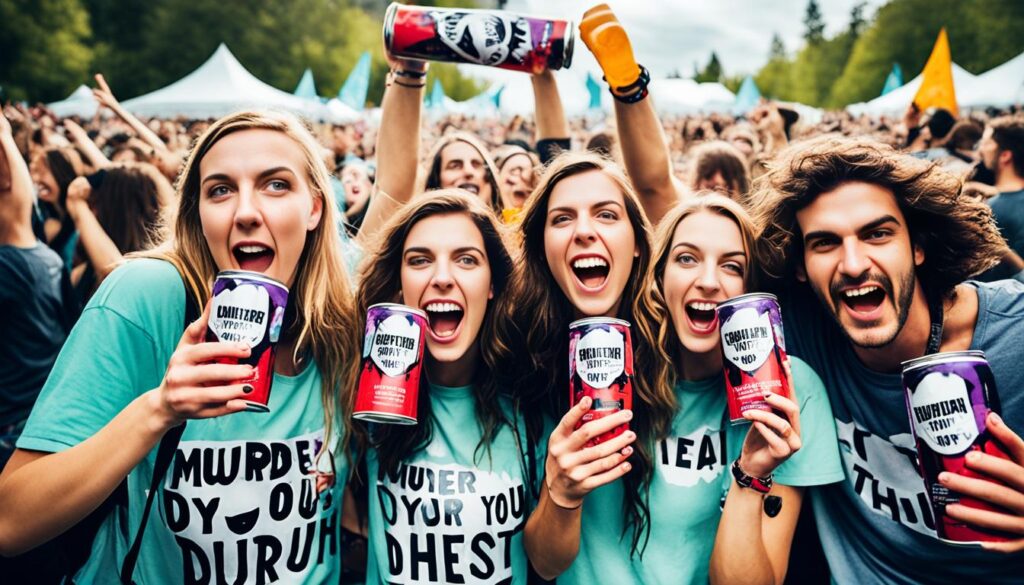
The Power of Branding in Punk Rock Marketing
Punk rock culture has a strong aesthetic and rebellious attitude that was incorporated into Liquid Death’s branding. The brand used punk-inspired design elements, such as a skull insignia and tallboy cans, to differentiate itself from traditional water brands. The unconventional branding and packaging helped Liquid Death stand out and attract attention from consumers, particularly millennials and Gen Z, who appreciated the brand’s rebellious and unique approach to marketing.
By embracing punk branding, Liquid Death successfully tapped into the rock ‘n’ roll fashion and alternative marketing strategies that resonate with younger generations. The brand’s rebellious imagery, including the skull insignia, appeals to the punk subculture and its associated aesthetics. This approach allowed Liquid Death to build a strong brand identity that sets it apart from other water brands.
The use of tallboy cans, typically associated with beer, further reinforces Liquid Death’s punk rock image. These larger cans challenge the traditional packaging of water and create a sense of excitement and rebellion. The bold choice of packaging reflects Liquid Death’s commitment to breaking the rules and standing out in the saturated beverage market.
Anchored in punk rock culture, Liquid Death’s branding not only attracts attention but also resonates with consumers who appreciate the brand’s authenticity and alternative marketing strategies. The brand’s unique approach cultivates a sense of community and belonging for those who identify with the punk lifestyle.
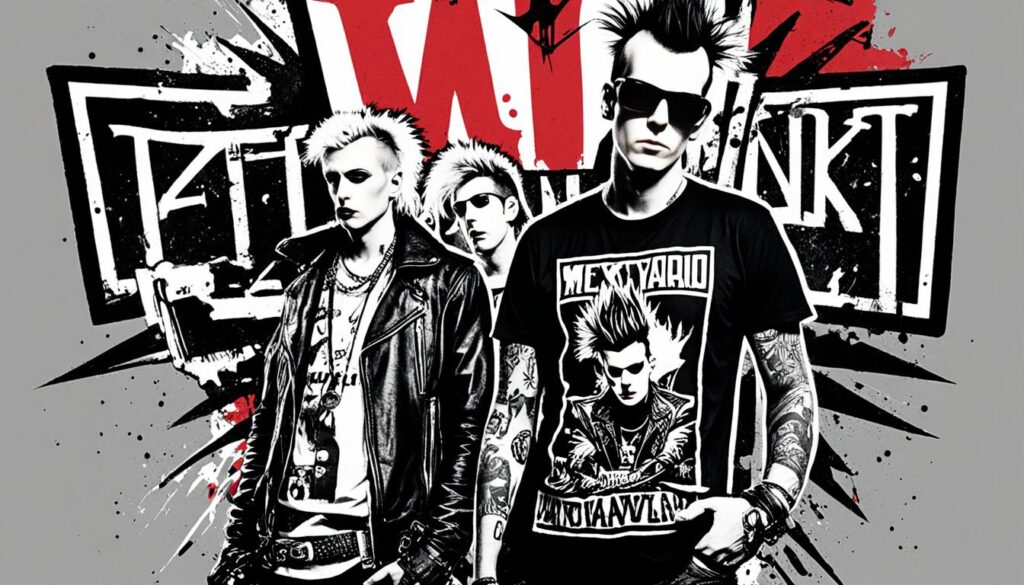
Punk rock culture has always celebrated individuality, nonconformity, and rebellion against the mainstream. By infusing these principles into Liquid Death’s branding, the brand connects with consumers on a deeper level. It’s not just about selling water; it’s about embracing a lifestyle and a mindset that challenges the status quo.
The power of branding in punk rock marketing lies in its ability to capture attention, ignite emotions, and differentiate itself from the sea of traditional marketing approaches. Liquid Death’s punk-inspired design elements, combined with its unique packaging choices, stand as a testament to the impact that alternative marketing strategies can have on consumer perception and engagement.
Punk Rock Attitude in Product Packaging
In our quest to disrupt the traditional water industry, we didn’t just focus on the liquid inside the can. We understood that packaging played a vital role in capturing the essence of punk rock culture and expressing our brand’s rebellious spirit.
That’s why we made a conscious decision to package Liquid Death water in distinctive aluminum cans. This choice wasn’t just about aesthetics; it was a statement about sustainability and our commitment to reducing plastic waste. By using aluminum, a material that is infinitely recyclable, we aimed to align ourselves with the values of the punk subculture, which has long been associated with challenging societal norms and advocating for a more sustainable future.
But the packaging of Liquid Death goes beyond just the choice of material. We sought inspiration from punk fashion and DIY punk ethos, ensuring that every can embodied the rebellious attitude that defines punk rock. The tallboy cans and the skull insignia prominently displayed on the packaging serve as visual cues, immediately evoking the punk rock aesthetic.
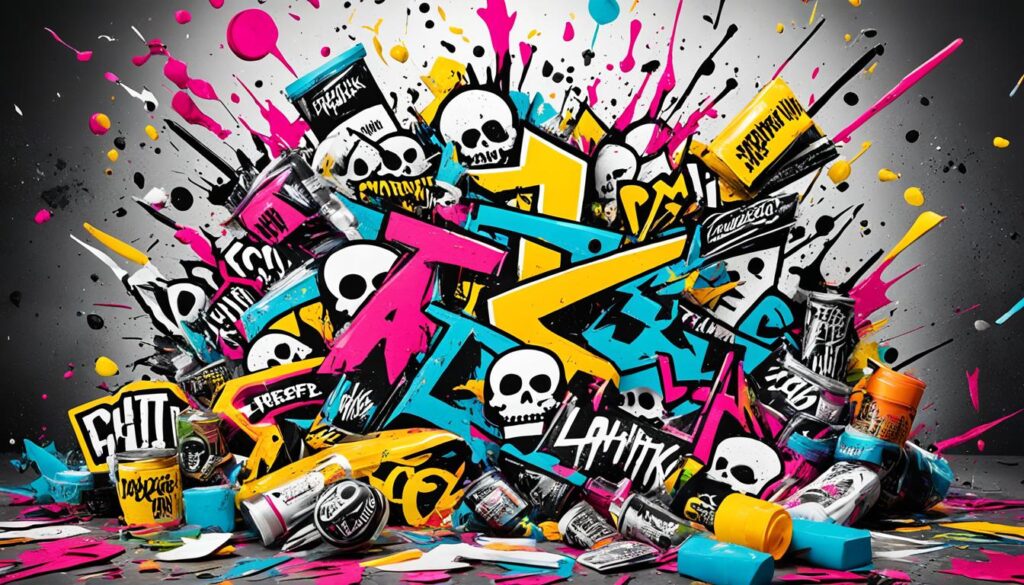
As a brand, we wanted to create a visceral and immersive experience for our customers. When they hold a can of Liquid Death, we want them to feel the raw energy that emanates from punk music concerts and the counterculture movement. We want them to connect with our brand on a deeper level, not just as a beverage choice but as a symbol of rebellion and authenticity.
The use of aluminum cans and the incorporation of punk elements into our packaging have helped us carve out a unique space in the market. We have not only differentiated ourselves from traditional water brands but have also created a strong emotional connection with our target audience: those who crave the DIY spirit and unapologetic attitude of punk rock culture.
Why Aluminum Cans?
Choosing aluminum cans for our packaging was a conscious decision that aligned with our values as a brand. Here are some of the reasons behind the choice:
- Environmental sustainability: Aluminum is one of the most recyclable and recycled materials worldwide. By using aluminum cans, we demonstrate our commitment to reducing plastic waste and promoting a more sustainable future.
- Aesthetic appeal: The tallboy cans not only catch the eye but also evoke the rebellious spirit of punk rock with their edgy design. They stand out on store shelves and demand attention.
- Portability and convenience: Whether you’re at a music festival or on the go, our aluminum cans are lightweight, portable, and easy to crush after consumption. They’re the perfect companion for an active and rebellious lifestyle.
We believe that packaging plays a crucial role in shaping a brand’s identity and communicating its core values. Through our punk-inspired packaging, we invite consumers to join us in embracing a DIY punk mentality and challenging the status quo.
“Packaging is the silent spokesperson of Liquid Death. It speaks volumes about our brand’s rebelliousness, sustainability, and love for punk rock.” – Mike Cessario, CEO of Liquid Death
By incorporating the punk rock attitude into our product packaging, we have succeeded in capturing the hearts and minds of consumers who resonate with our values. Our packaging is more than just a container for water; it’s a visual representation of our brand’s identity and a rallying cry for all those who embrace the punk rock ethos.
| Benefits of Punk-Inspired Packaging | Examples |
|---|---|
| Stands out on store shelves | Distinctive tallboy cans adorned with a skull insignia |
| Elicits an emotional response from consumers | Customers connect with our brand on a deeper level, identifying with the rebellious punk rock aesthetic |
| Differentiates us from traditional water brands | Drawing inspiration from punk fashion and DIY punk ethos sets us apart in a crowded market |
| Aligns with our commitment to sustainability | Choice of infinitely recyclable aluminum cans reflects our dedication to reducing plastic waste |
Punk Marketing’s Impact on Sales and Public Reception
Despite initial criticism and skepticism, Liquid Death’s unconventional marketing approach had a profound impact on both sales and public reception. The brand’s punk rock attitude and commitment to sustainability resonated with consumers, especially the younger generations who embraced the punk lifestyle and aesthetic.
As a result, Liquid Death witnessed an exponential growth in sales, leading to a valuation of over $130 million. The success can be attributed to the brand’s unique marketing campaigns that captured the attention of millions on social media platforms.
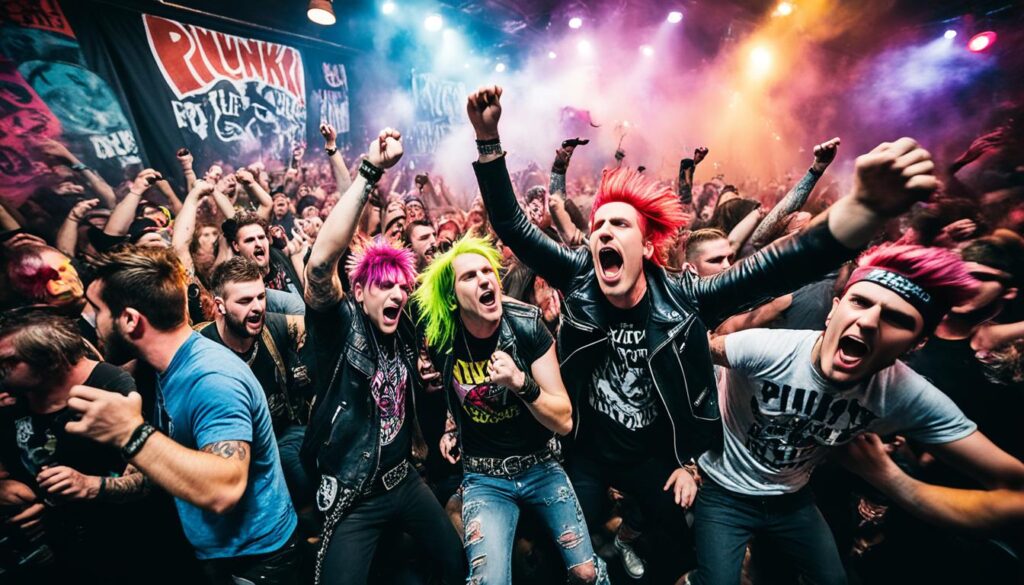
The sequel follows…
“Liquid Death’s marketing approach defied industry norms with its rebellious and unconventional nature. By encapsulating the essence of the punk rock culture, the brand tapped into an audience that craved authenticity and alternative marketing strategies. This resonated strongly with consumers and resulted in a remarkable surge in sales and brand recognition.”
– Marketing Expert
| Marketing Campaign | Social Media Buzz | Email Marketing Reach |
|---|---|---|
| Greatest Hates Album Release | 10 million views | 500,000 subscribers |
| Super Bowl Ad featuring Heavy Metal | 20 million views | 1 million recipients |
By leveraging social media platforms, Liquid Death successfully generated buzz and attracted a massive number of views. The brand’s unique marketing campaigns, such as the “Greatest Hates” album and the Super Bowl ad featuring heavy metal music, created a significant impact on social media, allowing Liquid Death to reach millions of potential customers.
Furthermore, the brand’s email marketing efforts led to a substantial reach, with hundreds of thousands of subscribers receiving engaging and punk-inspired content directly in their inboxes.
Liquid Death’s success can be attributed to its ability to authentically connect with consumers, tapping into the punk lifestyle and aesthetic. By embracing unconventional marketing strategies, the brand was able to disrupt the beverage industry and captivate a loyal fan base.
Key Takeaways
- The punk aesthetic and lifestyle can be a powerful tool in marketing, resonating with younger generations.
- Social media platforms provide a valuable avenue for reaching a broad audience and generating buzz.
- Email marketing remains an effective tool for engaging with customers on a personal level.
The impact of punk marketing on Liquid Death’s sales and public reception showcases the efficacy of combining unconventional strategies with a brand that embraces punk culture. By tapping into the punk lifestyle and aesthetic, Liquid Death was able to differentiate itself from its competitors and build an authentic connection with its target audience.
Lessons for B2B Marketers from Punk Rock Marketing
B2B marketers can draw valuable insights from the punk rock marketing approach adopted by Liquid Death. By embracing authenticity, cultivating interest, and staying true to the target audience, B2B brands can create a unique and memorable brand image that stands out in a competitive market. It’s not just about selling products; it’s about selling the brand itself. Packaging the purpose and values of the brand, as Liquid Death did with its commitment to sustainability, can deeply resonate with consumers and cultivate a base of loyal customers.
One key lesson B2B marketers can learn is the importance of authenticity. By remaining true to their brand’s core values and consistently delivering on promises, B2B companies can build trust and credibility with their audience. A genuine and transparent relationship with customers can lead to long-term partnerships and repeat business.
To differentiate themselves in the market, B2B brands can also take inspiration from the punk rock spirit of rebellion and nonconformity. By challenging traditional marketing norms and thinking outside the box, companies can create memorable campaigns that capture the attention of their target audience. This could involve using unconventional channels, such as social media influencers or guerrilla marketing tactics, to generate buzz and increase brand visibility.
Furthermore, packaging plays a crucial role in conveying the purpose and values of a B2B brand. Taking a cue from Liquid Death’s commitment to sustainability, B2B marketers can explore eco-friendly packaging options that align with their brand’s values. Communicating the brand’s dedication to social responsibility and environmental consciousness through packaging can resonate with consumers who prioritize sustainable practices.
| Key Lessons for B2B Marketers |
|---|
| 1. Embrace authenticity and remain true to brand values |
| 2. Challenge traditional marketing norms |
| 3. Utilize unconventional channels and tactics to capture attention |
| 4. Consider eco-friendly packaging to communicate brand values |
“Authenticity is key in building trust and credibility with B2B customers. By staying true to our brand values, we can create meaningful connections and foster long-term partnerships.” – Jane Evans, Marketing Director
B2B Marketing Rebels: A Case Study
To illustrate the successful application of punk rock marketing principles in the B2B space, let’s examine the case of RebelTech, a software solutions provider for the healthcare industry. RebelTech embraced authenticity by highlighting their rebel spirit and commitment to revolutionizing the healthcare sector through innovative technology.
RebelTech challenged traditional marketing norms by avoiding dry, technical content and instead adopting a bold and unconventional tone in their messaging. They utilized social media platforms to engage with their audience in a playful and irreverent manner, sharing informative yet entertaining content that resonated with healthcare professionals looking for a change.
In terms of packaging their purpose, RebelTech took inspiration from Liquid Death’s sustainability commitment. They promoted their eco-friendly software solutions and showcased how these products could help healthcare providers reduce paper waste and improve efficiency, aligning with the industry’s growing emphasis on sustainability.
This holistic approach paid off for RebelTech, as they captured attention, built a strong brand image, and established themselves as industry rebels, that were challenging the status quo in healthcare technology. By learning from the punk rock marketing playbook, they tapped into the rebellious spirit that exists in all of us and made a lasting impact in the B2B market.!
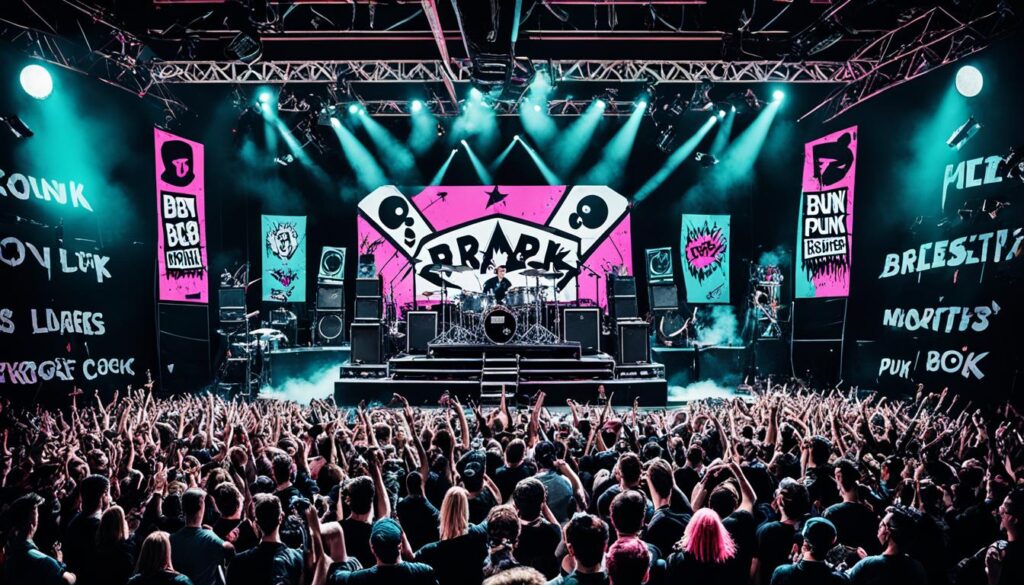
Liquid Death’s Impact on the Beverage Industry
Liquid Death’s success and disruptive marketing strategies have revolutionized the beverage industry. Through its unique approach to branding and marketing, the brand has inspired other companies to break free from traditional norms and embrace creativity.
The beverage industry is highly competitive, with new products constantly hitting the market. It takes something truly exceptional to stand out and make a lasting impression. Liquid Death achieved this through its bold and unconventional marketing tactics, capturing the attention of consumers and industry professionals alike.
The brand’s punk rock attitude injected a sense of rebellion and authenticity into an otherwise mundane industry. By embracing the counterculture and challenging the status quo, Liquid Death carved a niche for itself and attracted a loyal following. The brand’s commitment to sustainability further resonated with consumers, who value environmentally conscious choices.
“Liquid Death’s marketing approach is a game-changer. It challenges the industry to think differently and embrace disruption. Their success is a testament to the power of authenticity and creativity in marketing. It’s refreshing to see a brand take risks and ultimately succeed in such a competitive landscape.”
As a result of Liquid Death’s marketing success, other beverage companies have started adopting bolder strategies, pushing the limits of what is considered traditional marketing. From innovative packaging designs to unconventional advertising campaigns, the industry has witnessed a wave of creativity inspired by Liquid Death’s disruptive approach.
The impact of Liquid Death extends beyond just marketing. The brand’s success has demonstrated that consumers are looking for more than just a product. They want an experience, a connection, and a story that resonates with their values. This shift in consumer mindset has forced other beverage companies to reevaluate their own marketing strategies and find ways to establish a deeper connection with their target audience.
The Rise of Disruptive Marketing in the Beverage Industry
One of the key takeaways from Liquid Death’s success is the power of disruptive marketing in the beverage industry. By stepping outside the boundaries of traditional marketing tactics, the brand managed to break through the clutter and capture the attention of consumers. This approach has not only elevated Liquid Death but has also paved the way for other brands looking to make a mark in the industry.
Disruptive marketing is all about challenging the status quo, thinking outside the box, and daring to be different. It involves taking risks, pushing boundaries, and standing out from the crowd. In a saturated market, disruptive marketing can be the key to success, allowing brands to create a unique identity and carve a niche for themselves.
As more companies recognize the potential of disruptive marketing, the beverage industry is undergoing a transformation. From small craft breweries to global soda giants, brands are exploring unconventional marketing strategies to appeal to consumers and stay ahead of the competition.
The success of Liquid Death serves as an inspiration for marketers in the beverage industry and beyond. It demonstrates the power of authenticity, creativity, and a fearless approach to marketing. By embracing the spirit of disruption and thinking outside the box, brands can forge meaningful connections with their target audience and achieve unprecedented success.

As the beverage industry continues to evolve, disruptive marketing will play a crucial role in shaping its future. Brands that dare to challenge traditional norms and embrace creativity will have the opportunity to make a lasting impact and gain a competitive edge. Liquid Death’s journey is a testament to the transformative power of disruptive marketing and serves as a source of inspiration for marketers across industries.
Conclusion
Liquid Death’s punk rock marketing strategies have revolutionized the beverage industry, proving that unconventional approaches can lead to remarkable success. By embracing creativity, authenticity, and a rebellious attitude, companies can differentiate themselves from competitors and appeal to a loyal audience.
The power of punk rock marketing lies in its ability to captivate consumers and disrupt traditional advertising norms. Liquid Death’s commitment to punk-inspired design, sustainability, and humorous marketing campaigns has resonated with millennials and Gen Z, propelling the brand to a valuation of over $130 million in sales.
There are valuable marketing lessons to be learned from Liquid Death’s approach. B2B marketers can benefit from embracing authenticity and presenting their brand’s purpose and values in a compelling way. By thinking outside the box and staying true to their core principles, companies can stand out in a competitive market and forge meaningful connections with their target audience.
The success of Liquid Death is a testament to the power of punk rock marketing in creating a strong brand identity and attracting a dedicated customer base. By channeling the spirit of rebellion and staying true to their values, companies can unleash their creative potential and make a lasting impact in their industry.
FAQ
How did Liquid Death incorporate punk rock into their marketing strategies?
Liquid Death embraced the rebellious spirit of punk rock culture by using unconventional tactics, such as releasing an album of death metal music created from hate comments received online and launching humorous taste-test videos for their flavored sparkling waters. This punk-inspired approach helped the brand stand out and resonate with consumers.
Why did Liquid Death choose punk-inspired design elements for their branding?
Liquid Death used punk-inspired design elements, such as a skull insignia and tallboy cans, to differentiate themselves from traditional water brands. This unconventional branding helped them attract attention from consumers, especially millennials and Gen Z, who appreciated their rebellious and unique approach to marketing.
What made Liquid Death’s packaging unique and in line with punk rock culture?
Liquid Death’s choice to package their water in aluminum cans, with tallboy cans and a skull insignia, not only positioned the brand as an alternative to traditional water brands but also aligned with punk rock culture’s DIY aesthetics and rebellious attitude. The use of aluminum cans also highlighted their commitment to sustainability and reducing plastic waste.
How did Liquid Death’s punk rock marketing strategies impact their sales and public reception?
Despite initial criticism and skepticism, Liquid Death’s unique marketing campaigns, such as the “Greatest Hates” album and Super Bowl ad featuring heavy metal music, generated buzz and attracted millions of views on social media platforms. Millennials and Gen Z, in particular, resonated with the brand’s punk rock attitude and commitment to sustainability, leading to increased sales and a valuation of over $130 million.
What lessons can B2B marketers learn from Liquid Death’s punk rock marketing?
B2B marketers can learn the importance of authenticity, interesting storytelling, and selling the brand rather than just the products. Embracing creativity and packaging the brand’s purpose and values, as Liquid Death did with their commitment to sustainability, can resonate with consumers and attract loyal customers in a competitive market.
How has Liquid Death’s punk rock marketing impacted the beverage industry?
Liquid Death’s success and disruptive marketing strategies have inspired other companies to think outside the box and embrace creativity. The brand’s unique approach to branding and marketing, with its punk rock attitude and commitment to sustainability, has led to increased awareness and demand for their products, setting a new standard for marketing in the beverage industry.

